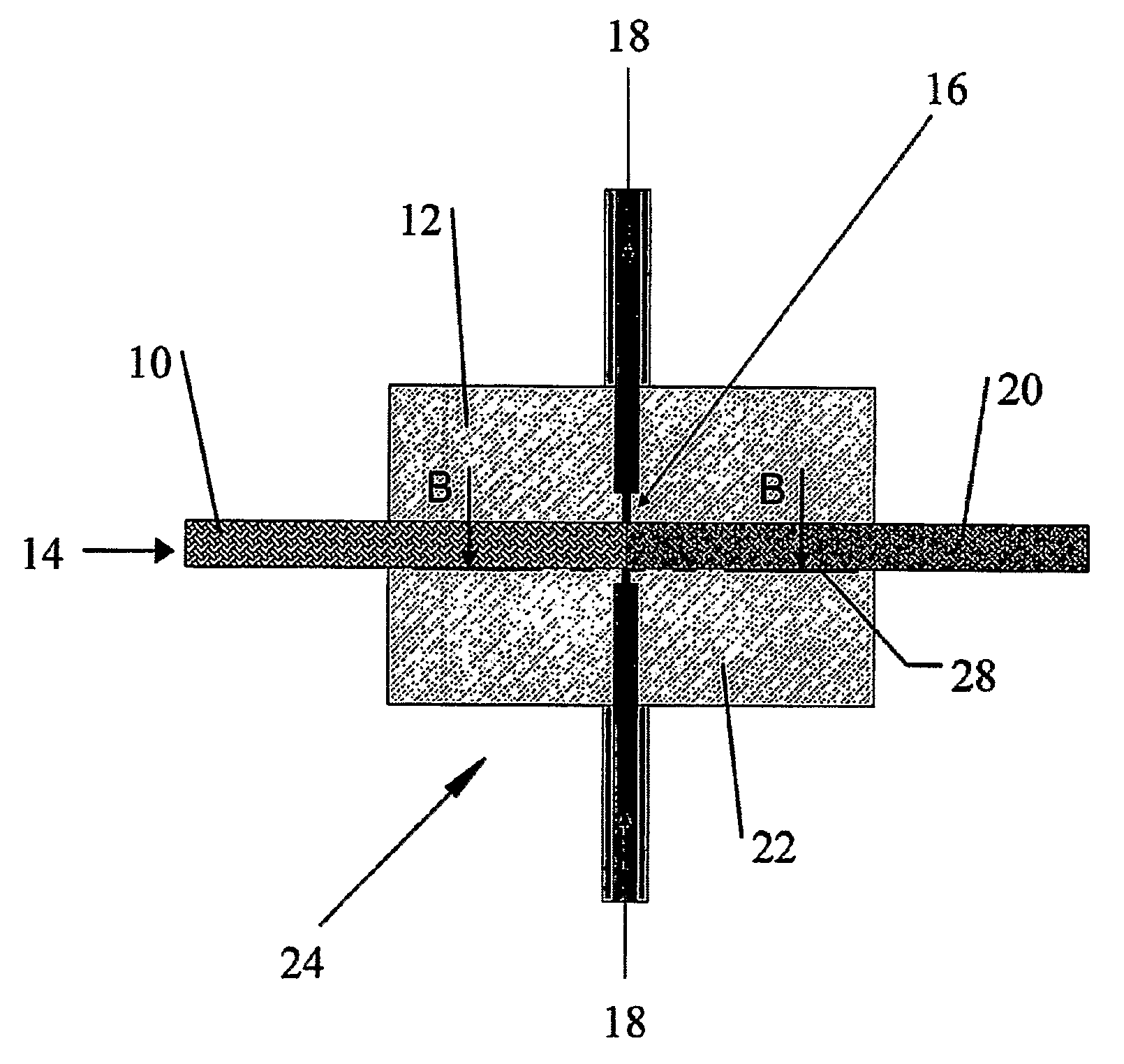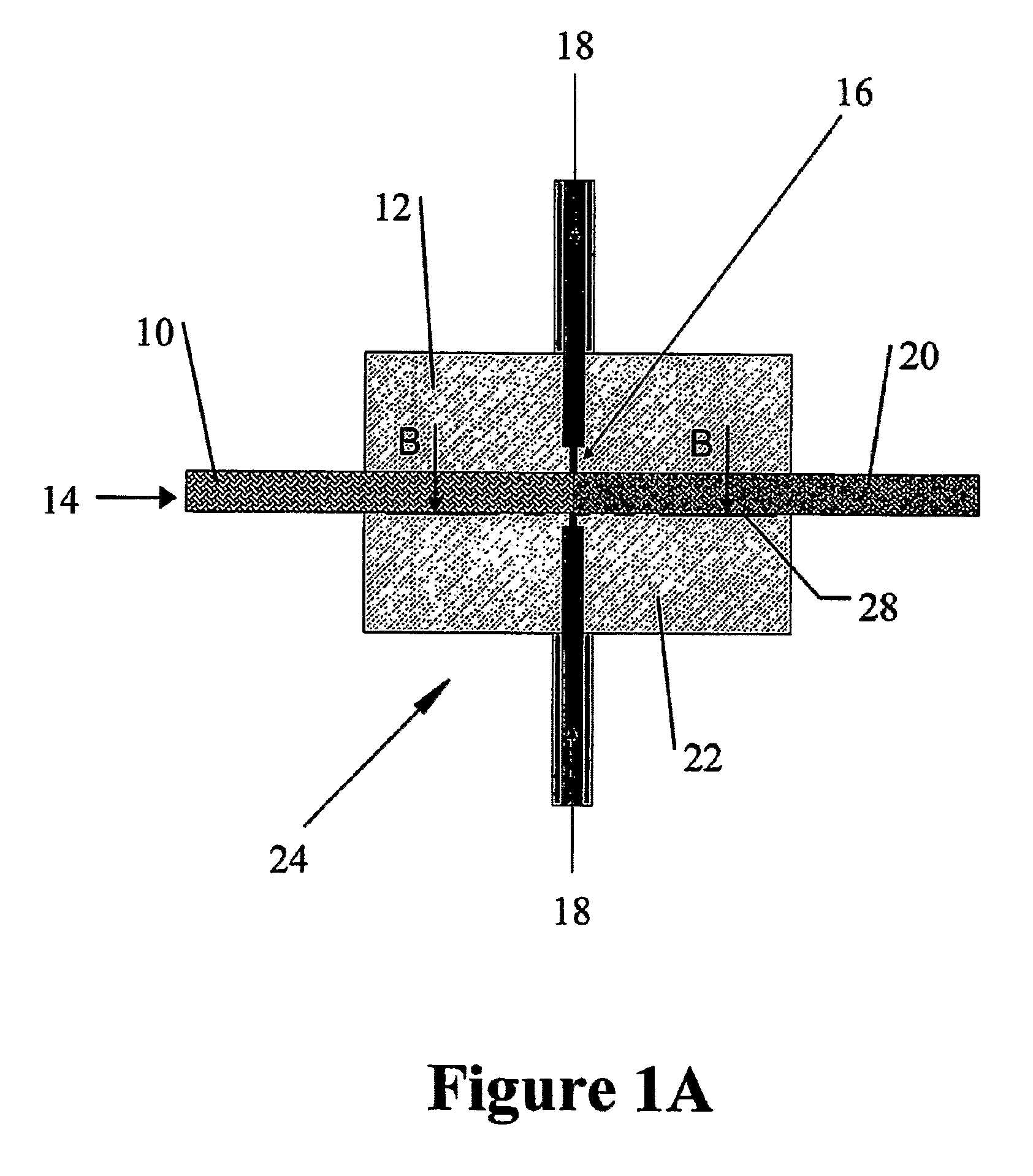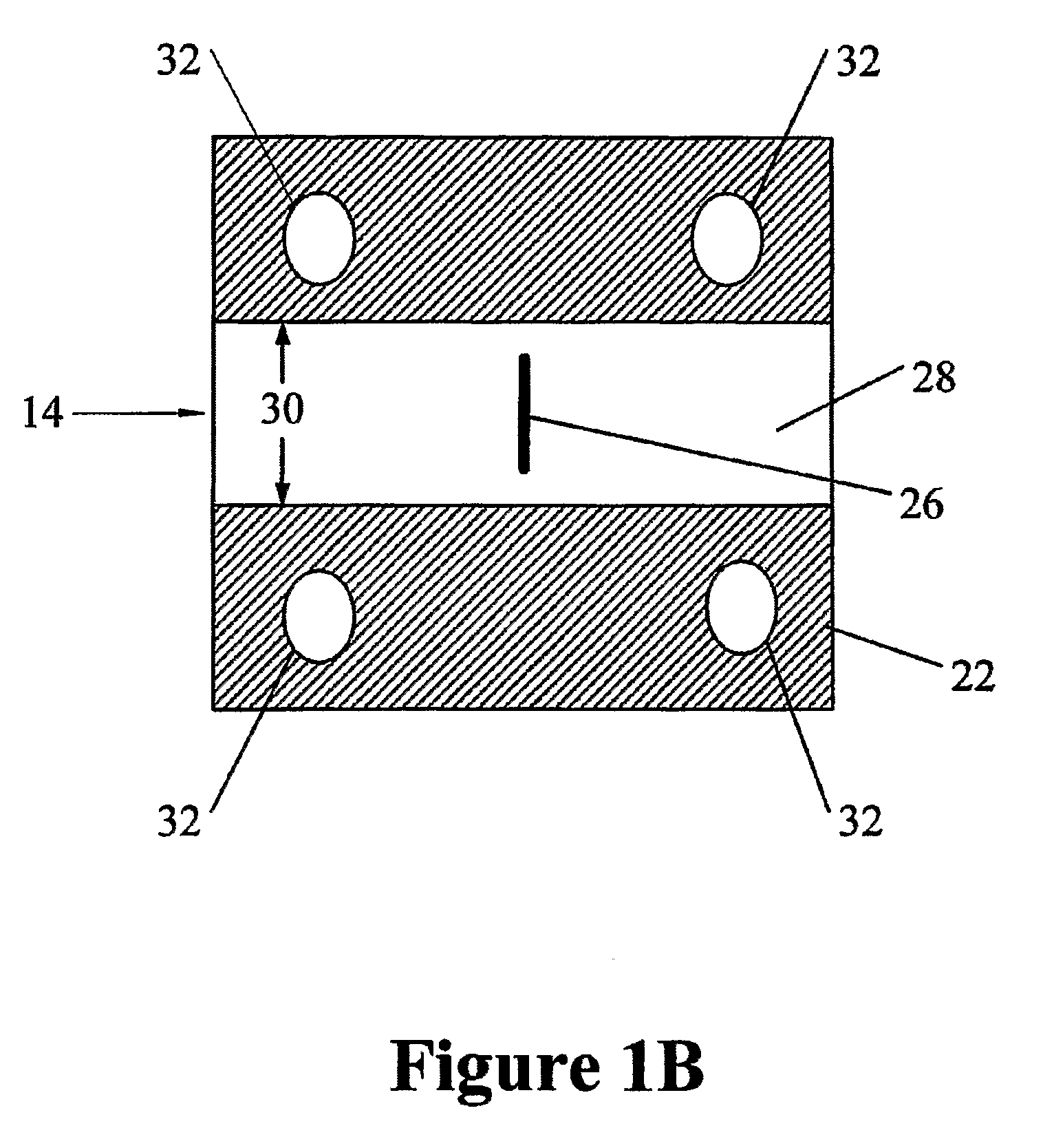Braid-Reinforced Composites and Processes for their Preparation
a technology of braided reinforcement and composites, applied in the field of braided reinforcement composites, can solve the problems of rare crack formation and propagation between braided reinforcement layers, crack propagation through the matrix of filament wound structures, and unique processing challenges of braided reinforcement, so as to facilitate opening and filling, improve interstitial filling, and increase the diameter of braided forms
- Summary
- Abstract
- Description
- Claims
- Application Information
AI Technical Summary
Benefits of technology
Problems solved by technology
Method used
Image
Examples
example 1
[0080]A resin composition was prepared by mixing 100 parts by weight EPON 862 (an epoxy resin available from Resolution Performance Products of Houston, Tex.), 22 parts by weight ANCAMINE 2441 (an amine curative available from Air Products and Chemicals, Inc. of Allentown, Pa.), and 5 parts by weight CABO-SIL TS-720 (a fumed silica available from Cabot Corporation of Billerica, Mass.). This composition was impregnated onto a braid form to form a braid-reinforced resin composition of the invention.
example 2
[0081]A resin composition was prepared by mixing 100 parts by weight EPALLOY 8230 (an epoxy resin available from CVC Specialty Chemicals, Inc. of Moorestown, N.J.), 6.6 parts by weight OMICURE DDA 5 (an ultra-micronized grade of dicyandiamide available from CVC Specialty Chemicals, Inc. of Moorestown, N.J.), 0.55 part by weight OMICURE U-52 (an aromatic substituted urea used as an accelerator for dicyandiamide cure of epoxies and available from CVC Specialty Chemicals, Inc. of Moorestown, N.J.), and 5 parts by weight CABO-SIL TS-720 (a fumed silica available from Cabot Corporation of Billerica, Mass.). This composition was impregnated onto a braid form to form a braid-reinforced resin composition of the invention.
example 3
[0082]A resin composition was prepared by mixing 100 parts by weight EPON 862 (an epoxy resin available from Resolution Performance Products of Houston, Tex.), 6.6 parts by weight AMICURE CG-1400 (a micronized grade of dicyandiamide available from Air Products and Chemicals, Inc. of Allentown, Pa.), 4.4 parts by weight AMICURE UR (a substituted urea-based accelerator—1 phenyl 3,3 dimethyl urea—for dicyandiamide-cured epoxy resins available from Air Products and Chemicals, Inc. of Allentown, Pa.), and 5 parts by weight CABO-SIL TS-720 (a fumed silica available from Cabot Corporation of Billerica, Mass.). This composition was impregnated onto a braid form to form a braid-reinforced resin composition of the invention.
PUM
| Property | Measurement | Unit |
|---|---|---|
| Temperature | aaaaa | aaaaa |
| Viscosity | aaaaa | aaaaa |
| Viscosity | aaaaa | aaaaa |
Abstract
Description
Claims
Application Information
 Login to View More
Login to View More - R&D
- Intellectual Property
- Life Sciences
- Materials
- Tech Scout
- Unparalleled Data Quality
- Higher Quality Content
- 60% Fewer Hallucinations
Browse by: Latest US Patents, China's latest patents, Technical Efficacy Thesaurus, Application Domain, Technology Topic, Popular Technical Reports.
© 2025 PatSnap. All rights reserved.Legal|Privacy policy|Modern Slavery Act Transparency Statement|Sitemap|About US| Contact US: help@patsnap.com



